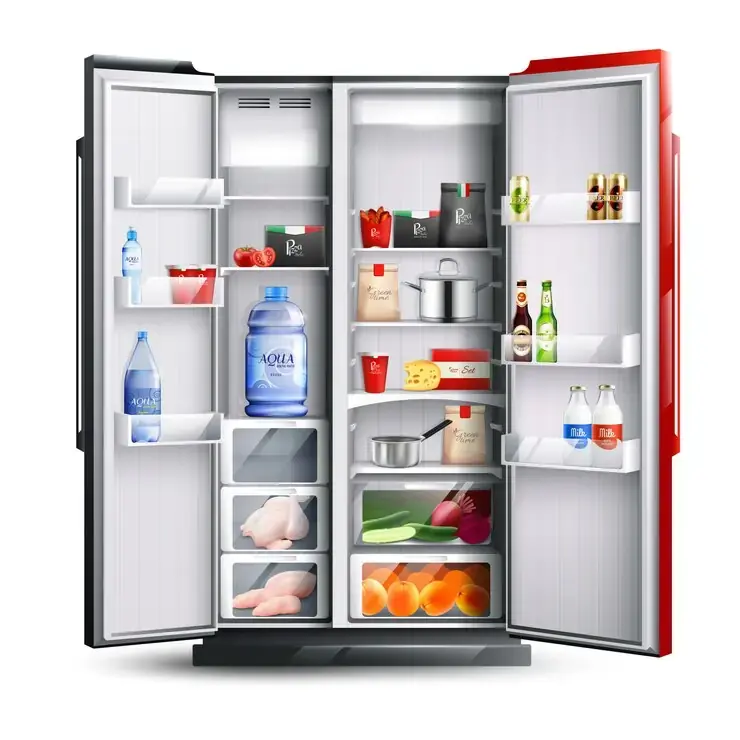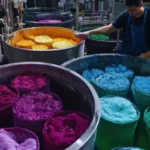Cooling without Electricity: Harnessing the Pot-in-Pot Refrigerator Principle
In remote regions with limited access to electricity, maintaining perishable food items fresh and cool can be challenging. However, an ingenious solution known as the Pot-in-Pot refrigerator principle offers a sustainable and highly effective way to refrigerate without electricity. Specifically, this method utilizes clay pots, sand, and a natural insulating material like coal, which not only absorbs heat but also provides an eco-friendly and practical alternative for cooling. Moreover, this innovative technique is both resourceful and accessible, making it especially beneficial in regions where electricity is unreliable or unavailable. In this way, it represents a creative and environmentally conscious approach to refrigeration.
How does the Pot-in-Pot Refrigerator work?
It is based on the simple concept of evaporation and insulation. It operates by exploiting the natural cooling effect that occurs when water evaporates. This method takes advantage of the difference in temperature between the inside and outside of the pots, effectively using electricity-free technology.
Essential materials and setup
To create a Pot-in-Pot refrigerator, you will need the following materials:
Two clay pots of different sizes – a smaller pot that fits inside a larger pot. A lid that fits snugly on the larger pot. Fine sand. Coal or charcoal pieces and other muisc items.
Setup of Pot-in-Pot Refrigerator
Place the larger clay pot on a flat, stable surface. This pot will serve as the outer container. Fill the gap between the two pots with fine sand, carefully ensuring it is evenly distributed, while leaving about a 2-inch space between the pots. Next, add a layer of coal or charcoal pieces on top of the sand, as this layer not only serves as the primary insulating material but also effectively absorbs heat and provides thermal insulation. Subsequently, place the smaller pot inside the larger pot, ensuring that it does not touch the sides, which is essential for maintaining proper insulation. Finally, cover the entire setup with a lid to further enhance insulation, thereby making it a highly efficient and eco-friendly cooling solution, especially suitable for situations where electricity is unavailable.

Working mechanism
As the inner pot is filled with perishable food items or beverages, water or any other liquid is poured into the sand–filled gap between the pots. The sand acts as a wick, gradually soaking up the water, which then evaporates through the pores of the clay pots. The process of evaporation extracts heat from the environment inside the inner pot, causing the temperature to decrease. This simple yet effective cooling mechanism keeps the items inside the inner pot cool and fresh without using electricity.
Benefits of using coal
Coal as an insulating material Coal, apart from being easily accessible and affordable, possesses excellent thermal insulation properties. Its porous nature enables efficient heat absorption, preventing it from passing to the inner pot. This insulating effect significantly contributes to maintaining cooler temperatures for longer durations, even in hot climates. Using coal, there’s no need for electricity.
Environmentally friendly solution
One notable advantage of the principle is its sustainability and minimal environmental impact. This low–tech solution requires no electricity or harmful refrigerants, making it a socially and environmentally responsible alternative.
Applications
The Pot-in-Pot refrigerator is particularly useful in various scenarios, including areas with unreliable electricity supply, off-grid locations, or even during outdoor activities like camping or picnics. Furthermore, it can effectively store perishable items such as fruits, vegetables, dairy products, and beverages, all while completely avoiding reliance on electricity. In addition, this innovative solution provides a practical and eco-friendly alternative that not only preserves food. It also reduces the environmental impact associated with traditional refrigeration methods.
Cooling without electricity is now possible through the ingenious Pot-in-Pot refrigerator principle. By combining clay pots, sand, and coal as an insulating material, this eco-friendly cooling solution not only provides a sustainable and efficient method for preserving perishable items but also highlights the benefits of innovative, low-energy alternatives. In particular, this approach proves invaluable in situations such as remote areas or outdoor adventures, where access to electricity may be limited. Moreover, this ancient yet effective technique significantly opens up new possibilities for not only keeping food fresh. It also reducing our dependence on electricity, thereby promoting a more sustainable lifestyle.
To stay updated with the latest developments in STEM research, visit ENTECT Online. This is our digital magazine for science, technology, engineering and mathematics.







